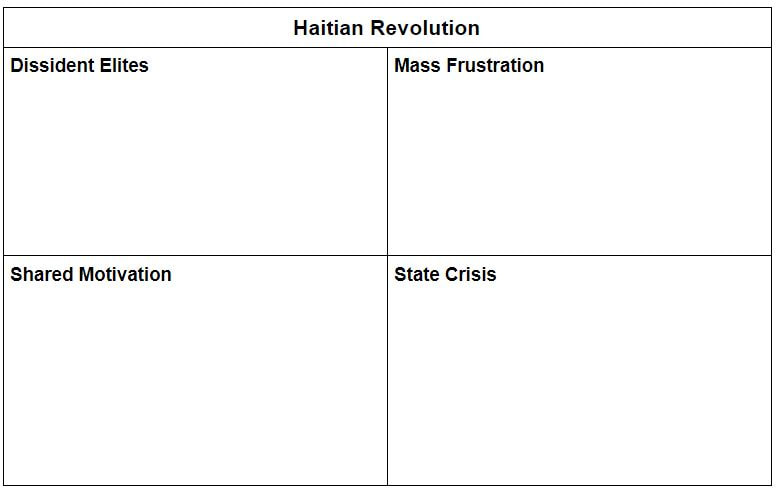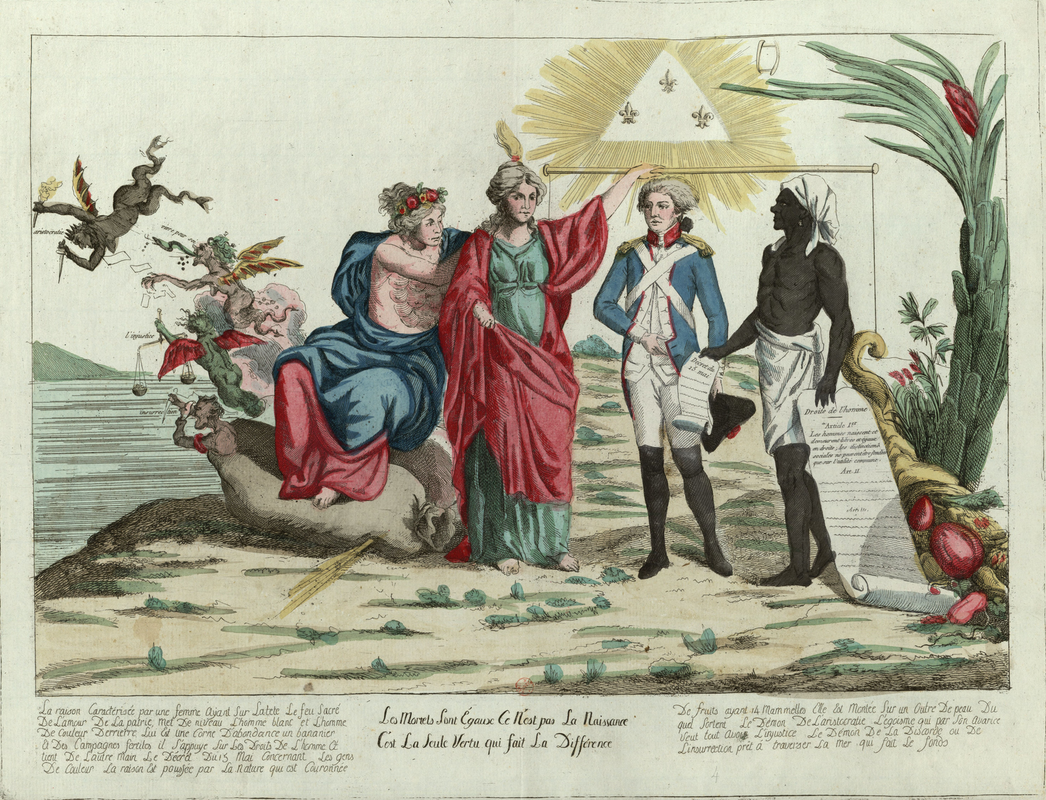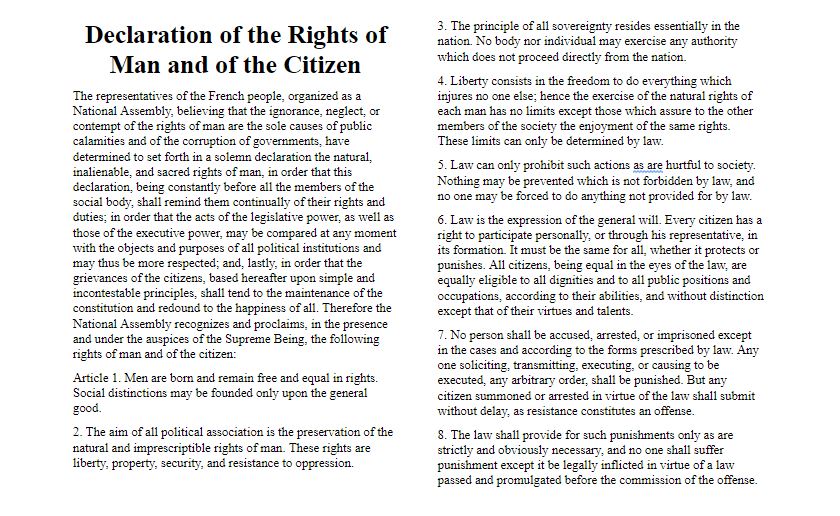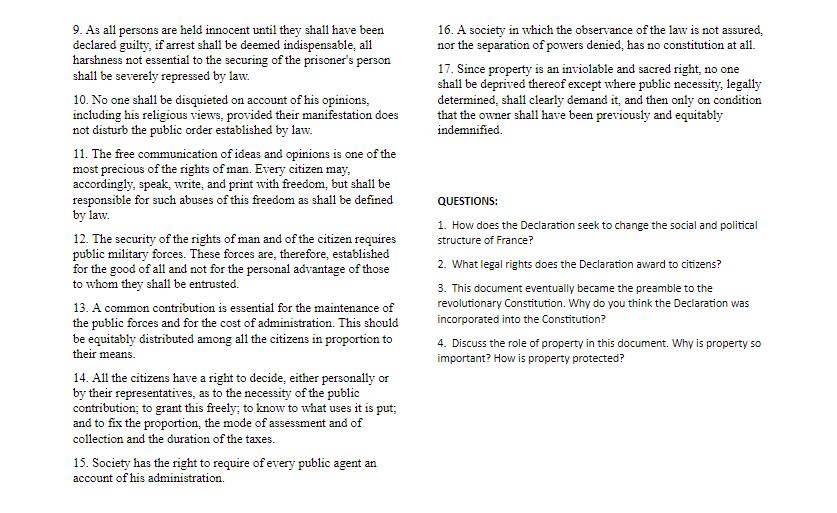Image Source - Toussaint Louverture 1743 — 1803
Standard
HS.H3.4: Evaluate how societies have balanced individual freedoms, responsibilities, and human dignity versus the common good.
Learning Target
I can explain multiple causes of conflict and evaluate the outcomes of various revolutions throughout the c.1600s-c.1800s.
Instructions
Please go through all 3 Parts of this Essential Lesson to help you better understand the events of the Haitian Revolution.
Guided Notes
Copy the table below into your notes.
The goal throughout the parts is to add to each of the boxes information that will help you identify these characteristics of a revolution.
HS.H3.4: Evaluate how societies have balanced individual freedoms, responsibilities, and human dignity versus the common good.
Learning Target
I can explain multiple causes of conflict and evaluate the outcomes of various revolutions throughout the c.1600s-c.1800s.
Instructions
Please go through all 3 Parts of this Essential Lesson to help you better understand the events of the Haitian Revolution.
Guided Notes
Copy the table below into your notes.
The goal throughout the parts is to add to each of the boxes information that will help you identify these characteristics of a revolution.
Part 1 - Analyze a Political Cartoon
Analyzing is a process that will help you better understand what you are trying to figure out.
Start off by stating what you see so that you can try to make sense of what the overall message is.
First, what do you see? Be very specific. Colors. Words. Symbols.
Second, what do you think the overall message is of this source?
Start off by stating what you see so that you can try to make sense of what the overall message is.
First, what do you see? Be very specific. Colors. Words. Symbols.
Second, what do you think the overall message is of this source?
Part 2 - Videos - Extra History
|
|
|
|
|
|
|
|
Part 3 - Primary Source Reading
INTRODUCTION:
The Declaration of the Rights of Man and of the Citizen was one of the documents crucial to the early stages of the French Revolution. The document was adopted by the new Constituent Assembly on August 26, 1789 and became the preamble of the 1791 Constitution. Similar to the American Declaration of Independence, the document was influenced by Enlightenment philosophy and ideals. The emphasis placed on the right of property was also found in the writings of John Locke, and Article 6, which refers to the "general will," echoes the ideas of Rousseau. The Declaration also attempted to redress the problems of the ancien regime, under whom the rights of citizens could be overturned at any time by the king. While reading this document, consider the changes to French society that it advocates. Who benefits from the rights set out in this declaration?
The Declaration of the Rights of Man and of the Citizen was one of the documents crucial to the early stages of the French Revolution. The document was adopted by the new Constituent Assembly on August 26, 1789 and became the preamble of the 1791 Constitution. Similar to the American Declaration of Independence, the document was influenced by Enlightenment philosophy and ideals. The emphasis placed on the right of property was also found in the writings of John Locke, and Article 6, which refers to the "general will," echoes the ideas of Rousseau. The Declaration also attempted to redress the problems of the ancien regime, under whom the rights of citizens could be overturned at any time by the king. While reading this document, consider the changes to French society that it advocates. Who benefits from the rights set out in this declaration?



